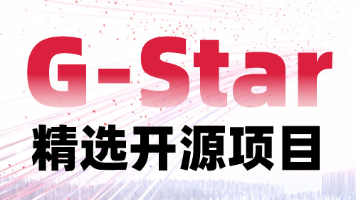Spring Integration 提供了基于Spring的EIP(Enterprise Integration Patterns,企业集成模式)的实现。Spring Integration 主要解决的问题是不同系统之间交互的问题,通过异步消息驱动来达到系统交互时系统之间的松耦合。
Spring Integration 主要有Message、Channel、Message EndPoint组成。
Message
Message是用来在不同部分之间传递的数据。Message有两部分组成:消息体(payload)与消息头(header)。消息体可以是任何数据类型;消息头表示的元数据就是解释消息体的内容。
/**
* A generic message representation with headers and body.
*
* @author Mark Fisher
* @author Arjen Poutsma
* @since 4.0
* @see org.springframework.messaging.support.MessageBuilder
*/
public interface Message<T> {
/**
* Return the message payload.
*/
T getPayload();
/**
* Return message headers for the message (never {@code null} but may be empty).
*/
MessageHeaders getHeaders();
}
- 1
- 2
- 3
- 4
- 5
- 6
- 7
- 8
- 9
- 10
- 11
- 12
- 13
- 14
- 15
- 16
- 17
- 18
- 19
- 20
- 21
Channel
在消息系统中,消息发送者发送消息到通道(Channel),消息接受者从通道(Channel)接收消息。
1、顶级接口
(1) MessageChannel
MessageChannel 是Spring Integration消息通道的顶级接口:
public interface MessageChannel {
/**
* Constant for sending a message without a prescribed timeout.
*/
long INDEFINITE_TIMEOUT = -1;
/**
* Send a {@link Message} to this channel. If the message is sent successfully,
* the method returns {@code true}. If the message cannot be sent due to a
* non-fatal reason, the method returns {@code false}. The method may also
* throw a RuntimeException in case of non-recoverable errors.
* <p>This method may block indefinitely, depending on the implementation.
* To provide a maximum wait time, use {@link
* @param message the message to send
* @return whether or not the message was sent
*/
boolean send(Message<?> message);
/**
* Send a message, blocking until either the message is accepted or the
* specified timeout period elapses.
* @param message the message to send
* @param timeout the timeout in milliseconds or {@link
* @return {@code true} if the message is sent, {@code false} if not
* including a timeout of an interrupt of the send
*/
boolean send(Message<?> message, long timeout);
}
- 1
- 2
- 3
- 4
- 5
- 6
- 7
- 8
- 9
- 10
- 11
- 12
- 13
- 14
- 15
- 16
- 17
- 18
- 19
- 20
- 21
- 22
- 23
- 24
- 25
- 26
- 27
- 28
- 29
- 30
- 31
MessageChannel 有两大子接口,分别是PollableChannel (可轮询)和SubscribableChannel(可订阅)。我们所有的消息通道类都是现实这两个接口。
(2) PollableChannel
PollableChannel 具备轮询获得消息的能力。
public interface PollableChannel extends MessageChannel {
/**
* Receive a message from this channel, blocking indefinitely if necessary.
* @return the next available {@link Message} or {@code null} if interrupted
*/
Message<?> receive();
/**
* Receive a message from this channel, blocking until either a message is available
* or the specified timeout period elapses.
* @param timeout the timeout in milliseconds or {@link MessageChannel#INDEFINITE_TIMEOUT}.
* @return the next available {@link Message} or {@code null} if the specified timeout
* period elapses or the message reception is interrupted
*/
Message<?> receive(long timeout);
}
- 1
- 2
- 3
- 4
- 5
- 6
- 7
- 8
- 9
- 10
- 11
- 12
- 13
- 14
- 15
- 16
- 17
- 18
(3) SubscribableChannel
SubscribableChannel 发送消息给订阅了MessageHanlder的订阅者
public interface SubscribableChannel extends MessageChannel {
/**
* Register a message handler.
* @return {@code true} if the handler was subscribed or {@code false} if it
* was already subscribed.
*/
boolean subscribe(MessageHandler handler);
/**
* Un-register a message handler.
* @return {@code true} if the handler was un-registered, or {@code false}
* if was not registered.
*/
boolean unsubscribe(MessageHandler handler);
}
- 1
- 2
- 3
- 4
- 5
- 6
- 7
- 8
- 9
- 10
- 11
- 12
- 13
- 14
- 15
- 16
- 17
2、常用消息通道
(1)、PublishSubscribeChannel
PublishSubscribeChannel允许广播消息给所有订阅者,配置方式如下:
/**
* 允许广播消息给所有订阅者,当前消息通道的id为publishSubscribeChannel
* @return
*/
@Bean
public PublishSubscribeChannel publishSubscribeChannel(){
PublishSubscribeChannel channel = new PublishSubscribeChannel();
return channel;
}
其中,当前消息通道的id为publishSubscribeChannel。
(2)、QueueChannel
QueueChannel允许消息接收者轮询获得消息,用一个队列(queue)接收消息,队列的容量大小可配置,配置方式如下:
@Bean
public QueueChannel queueChannel(){
QueueChannel channel = new QueueChannel(10);
return channel;
}
其中,QueueChannel构造参数10即为队列的容量。
(3)、PriorityChannel
PriorityChannel可按照优先级将数据存储到队列,它依据于消息的消息头priority属性,配置方式如下:
@Bean
public PriorityChannel priorityChannel(){
PriorityChannel channel = new PriorityChannel(10);
return channel;
}
(4)、RendezvousChannel
RendezvousChannel确保每一个接收者都接收到消息后再发送消息,配置方式如下:
@Bean
public RendezvousChannel rendezvousChannel(){
RendezvousChannel channel = new RendezvousChannel();
return channel;
}
(5) DirectChannel
DirectChannel是Spring Integration默认的消息通道,它允许将消息发送给为一个订阅者,然后阻碍发送直到消息被接收,配置方式如下:
@Bean
public DirectChannel directChannel(){
DirectChannel channel = new DirectChannel();
return channel;
}
(6)、ExecutorChannel
ExecutorChannel可绑定一个多线程的task executor,配置方式如下:
@Bean
public ExecutorChannel executorChannel(){
ExecutorChannel channel = new ExecutorChannel(executor());
return channel;
}
@Bean
public Executor executor(){
ThreadPoolTaskExecutor taskExecutor = new ThreadPoolTaskExecutor();
taskExecutor.setCorePoolSize(5);
taskExecutor.setMaxPoolSize(10);
taskExecutor.setQueueCapacity(25);
taskExecutor.initialize();
return taskExecutor;
}
3、通道拦截器
Spring Integration给消息通道提供了通道拦截器(ChannelInterceptor),用来拦截发送和接收消息的操作.
ChannelInterceptor接口定义如下,我们只需要实现这个接口即可:
public interface ChannelInterceptor {
Message<?> preSend(Message<?> message, MessageChannel channel);
void postSend(Message<?> message, MessageChannel channel, boolean sent);
void afterSendCompletion(Message<?> message, MessageChannel channel, boolean sent, Exception ex);
boolean preReceive(MessageChannel channel);
Message<?> postReceive(Message<?> message, MessageChannel channel);
void afterReceiveCompletion(Message<?> message, MessageChannel channel, Exception ex);
}
通过如下代码给所有的channel增加拦截器
channel.addInterceptor(someInterceptor);
Message EndPoint
消息端点(Message EndPoint)是真正处理消息的(Message)组件,它还可以控制通道的路由。我们可用的消息端点包含如下:
(1) Channel Adapter
通道适配器(Channel Adapter)是一种连接外部系统或传输协议的端点(EndPoint),可以分为入站(inbound)和出站(outbound)。
通道适配器是单向的,入站通道适配器只支持接收消息,出站通道适配器只支持输出消息。
Spring Integration内置了如下的适配器:
RabbitMQ、Feed、File、FTP/SFTP、Gemfire、HTTP、TCP/UDP、JDBC、JPA、JMS、Mail、MongoDB、Redis、RMI
Twitter、XMPP、WebServices(SOAP、REST)、WebSocket
(2) Gateway
消息网关(Gateway)类似于Adapter,但是提供了双向的请求/返回集成方式,也分为入站(inbound)和出站(outbound)。
Spring Integration 对响应的Adapter都提供了Gateway。
(3) Service Activator
Service Activator 可调用Spring的Bean来处理消息,并将处理后的结果输出到指定的消息通道。
(4) Router
路由(Router) 可根据消息体内容(Payload Type Router)、消息头的值(Header Value Router) 以及定义好的接收表(Recipient List Router) 作为条件,来决定消息传递到的通道。
(5) Filter
过滤器(Filter) 类似于路由(Router),不同的是过滤器不决定消息路由到哪里,而是决定消息是否可以传递给消息通道。
(6) Splitter
拆分器(Splitter)将消息拆分为几个部分单独处理,拆分器处理的返回值是一个集合或者数组。
(7) Aggregator
聚合器(Aggregator)与拆分器相反,它接收一个java.util.List作为参数,将多个消息合并为一个消息。
(8) Enricher
当我们从外部获得消息后,需要增加额外的消息到已有的消息中,这时就需要使用消息增强器(Enricher)。消息增强器主要有消息体
增强器(Payload Enricher)和消息头增强器(Header Enricher)两种。
(9) Transformer
转换器(Transformer)是对获得的消息进行一定的转换处理(如数据格式转换).
(10) Bridge
使用连接桥(Bridge)可以简单的将两个消息通道连接起来。

 已为社区贡献1条内容
已为社区贡献1条内容







所有评论(0)